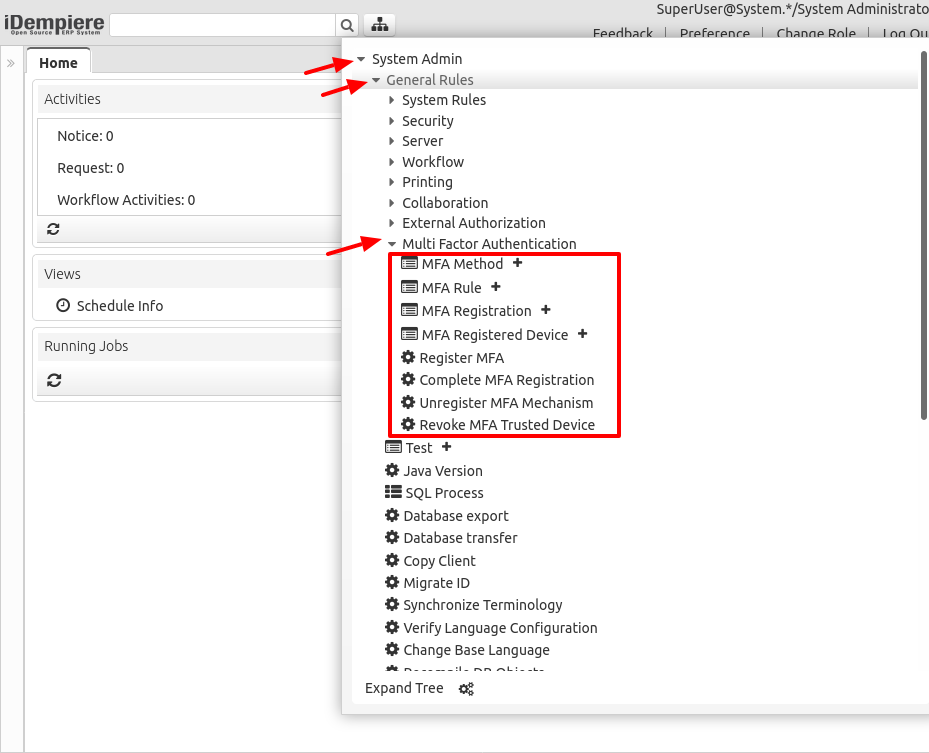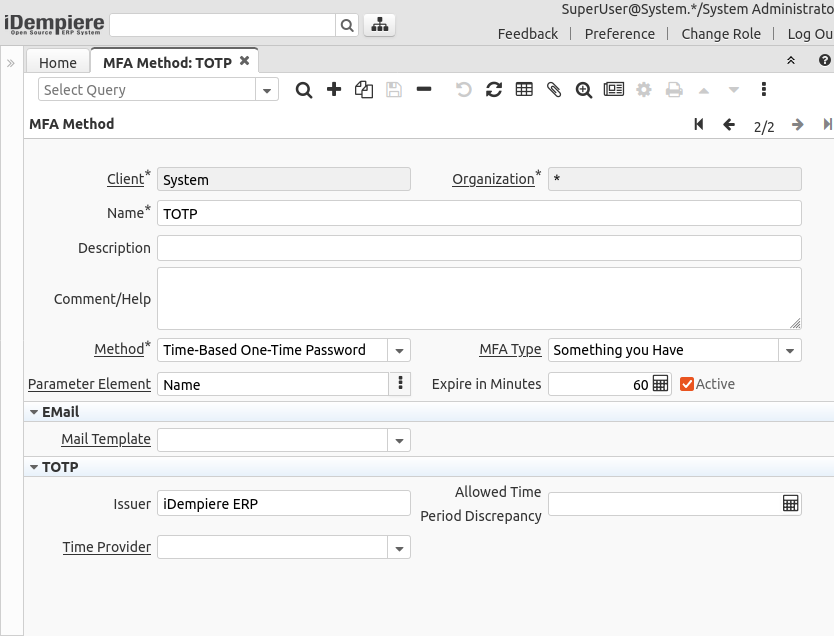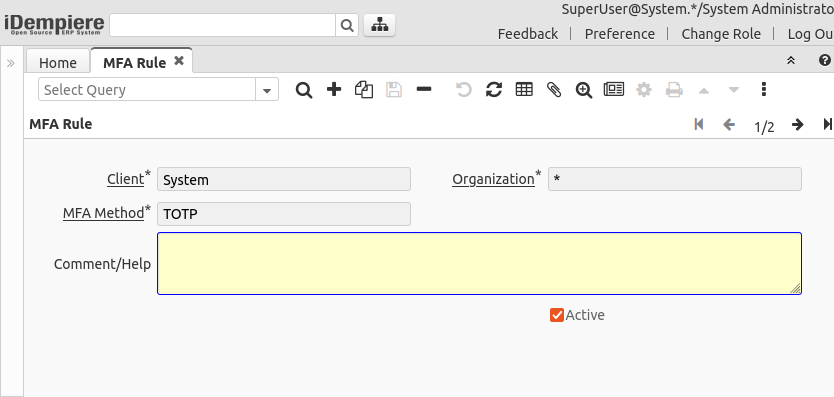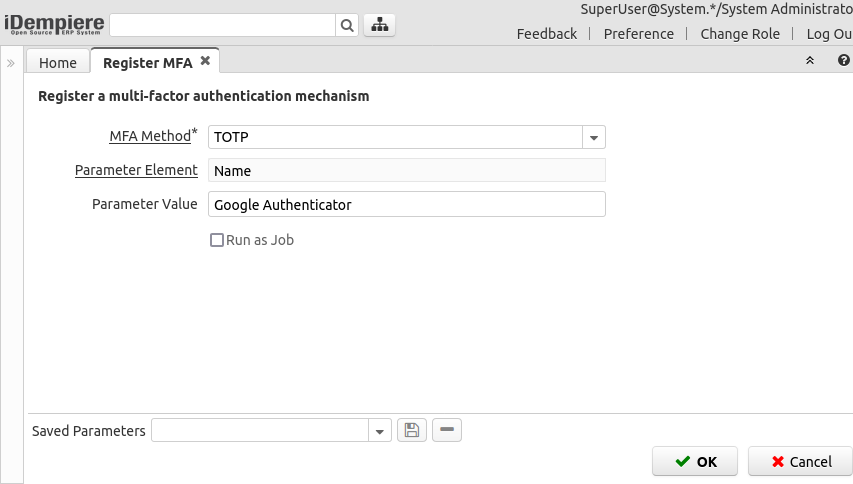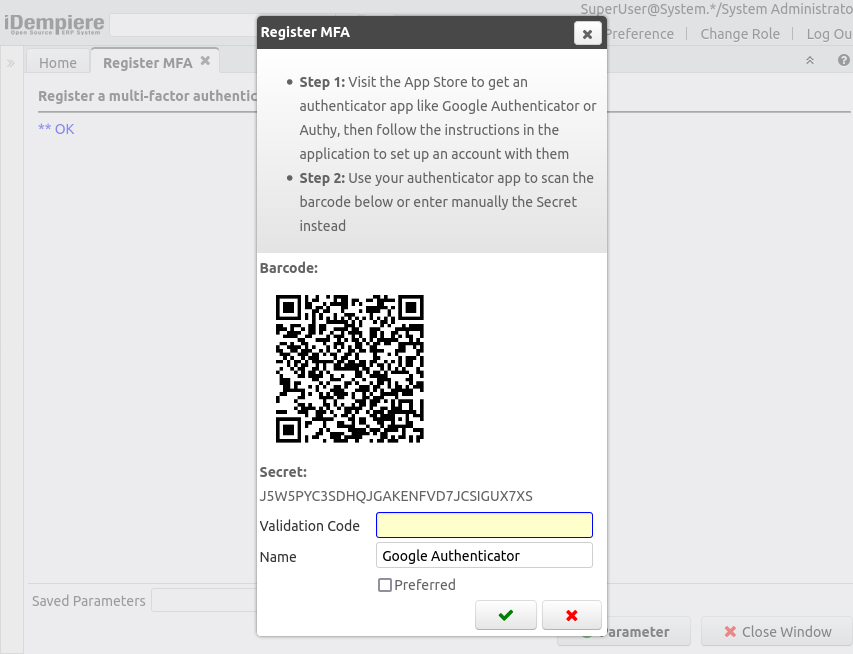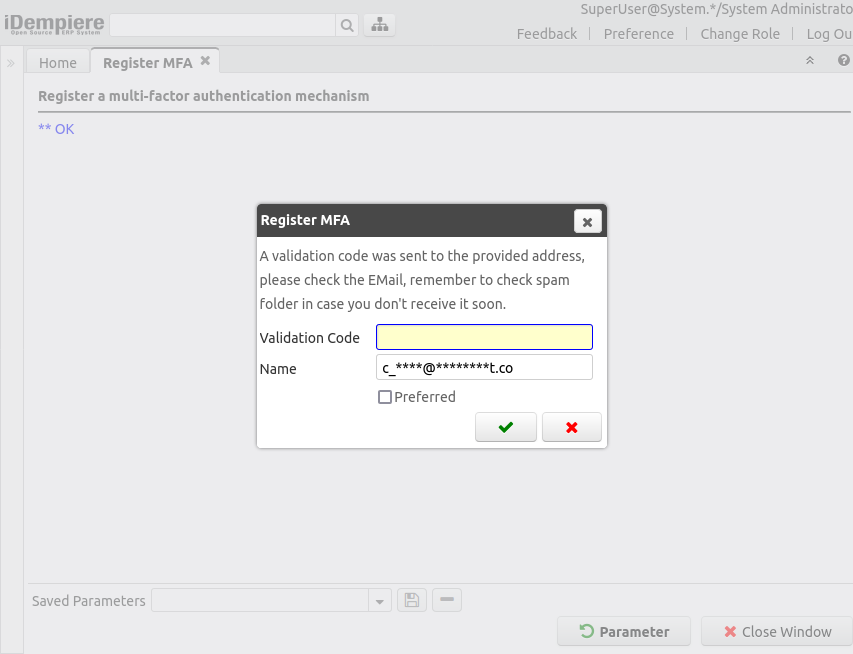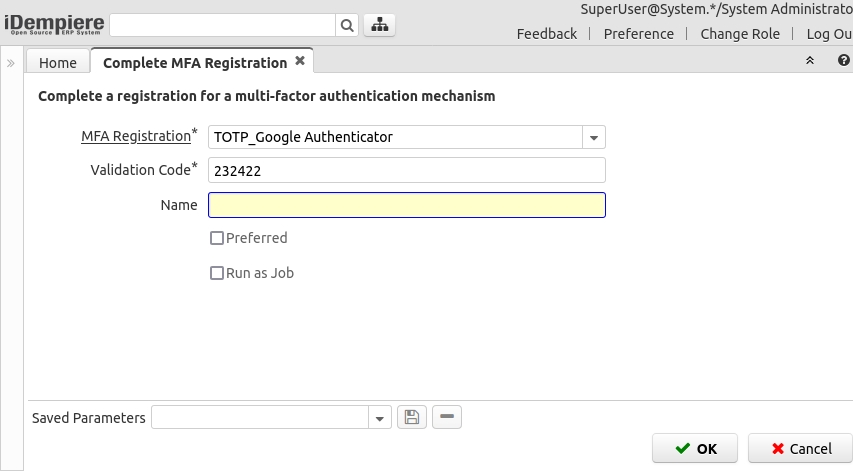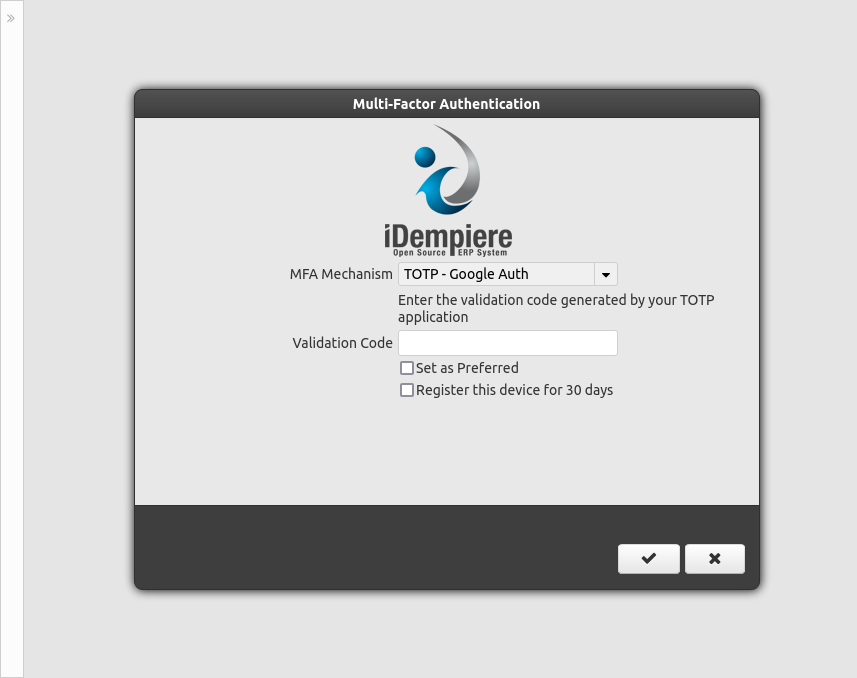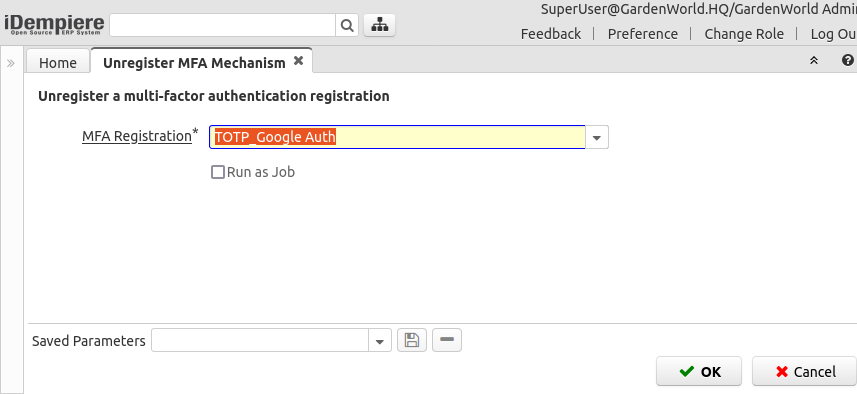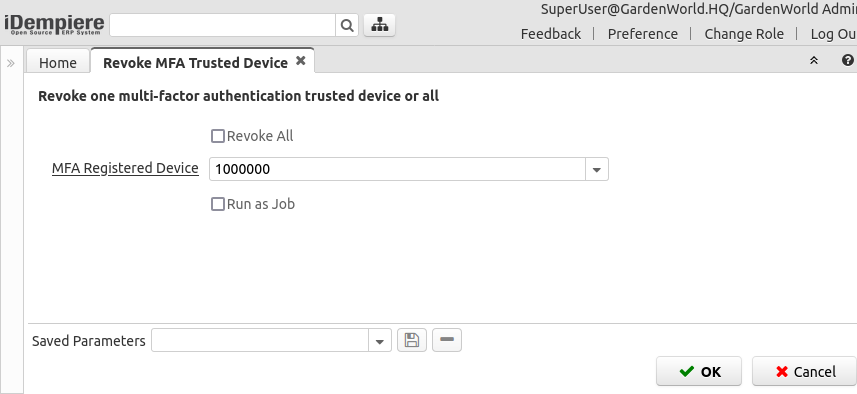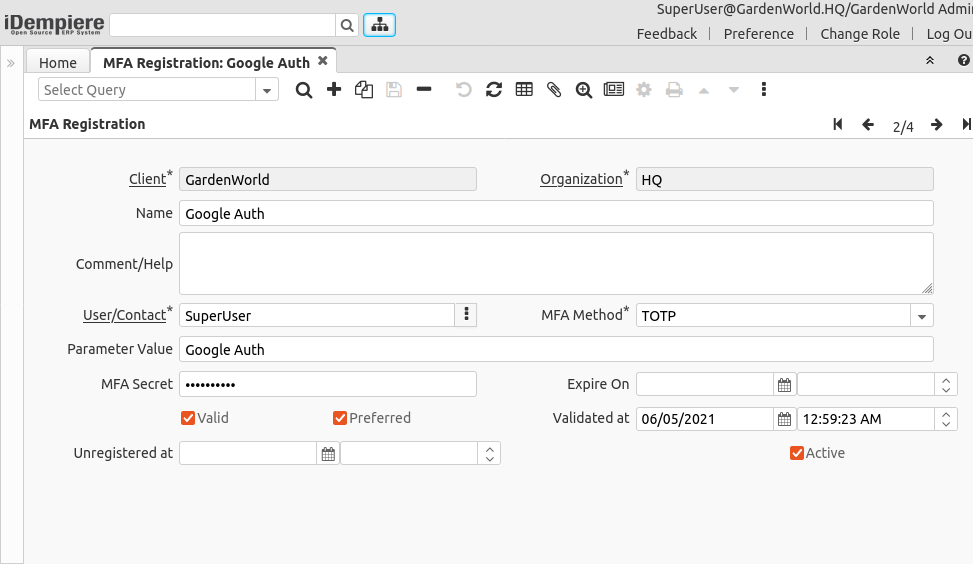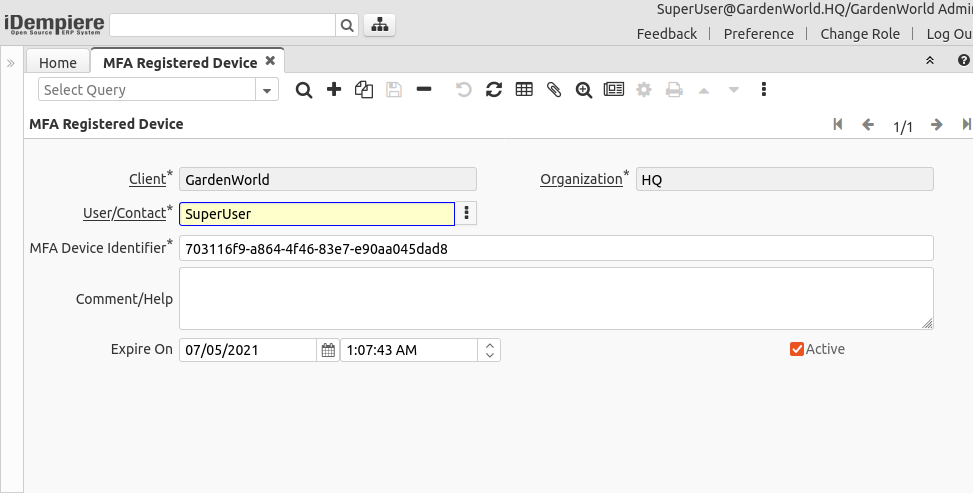Configure MFA
Feature: Implement Multi Factor Authentication
Goal: Security
Developer: Carlos Ruiz
Sponsor: FH
MFA Goal
The goal of multi-factor authentication is security, protecting the user from an unknown person trying to access their data.
The typical authentication is done using a password (something you know), when configuring multi-factor authentication, additionally to something you know it must be verified another factor like something you have (for example validate that you have a device, or you are the owner of an email), or something you are (biometrics).
Menu
The options for this feature can be found in the menu System Admin > General Rules > Multi Factor Authentication
Configuration
MFA Method
The MFA Method window is used to configure different methods of authentication, the system provides implementation for the methods: TOTP (Time-Based One-Time Password) and EMail
Other methods can be added via plugins (see the section below Extending MFA)
Important Fields:
- Method: The method being defined, this is required as a filter when implementing a new plugin
- Parameter Element: The methods use different values to be configured by the user, here is to give a name to the parameter used by the method
- Expire in Minutes: The expiration for the registration of this method
- Mail Template: For the EMail method a mail template can be configured to send the validation code to the user - the template MFA Validation Code is provided in the system by default but it can be changed
- Issuer: In TOTP method this define the name of the system sending the authentication
- Allowed Time Period Discrepancy: To set the allowed discrepancy, see explanation here
- Time Provider, Time Server: TOTP can use the system clock or an NTP provider to get the time, more explanation here
MFA Rule
The MFA Rule window is to configure the different methods allowed per tenant. When a rule is registered on System, it is available for all tenants, when a rule is registered in a Tenant, it is available just for that tenant.
System Configurator
There are two system configurator keys that can be used to modify the behavior of MFA:
- MFA_NTP_TIMEOUT_IN_MILLISECONDS: This is System configuration to define a timeout for getting the time from an NTP server in TOTP method, the default is 5000 (5 seconds)
- MFA_REGISTERED_DEVICE_EXPIRATION_DAYS: This is a Tenant configuration to define the days allowed for registering a device, the default is 30, if is zero then registering a device is not allowed
Usage
Register MFA
This process is used to register a new MFA mechanism:
- MFA Method: The user selects here the MFA method to register
- Parameter Element: The system shows the name of the element that the user must provide next
- Parameter Value: The user can (or must, depending on the method) provide a value for the parameter, for example for TOTP the user CAN provide a name, for EMail the user MUST provide an EMail
After the user register a TOTP mechanism, he's presented with the information to complete the process:
- Instructions: Here is to provide instructions to the user about the next step(s) to complete the configuration
- Barcode: For TOTP method a QR code is shown to register the mechanism scanning it
- Secret: Alternatively the TOTP apps allow to register manually entering a secret
- Validation Code: The user is instructed to enter the validation code from the TOTP, or EMail
- Preferred: With this flag the user can set this mechanism as his preferred to be shown at first on login time
The screen for EMail is similar, but slightly different:
After the user provides a valid code the mechanism is marked as valid and the registration finishes successfully. The user can also opt to cancel the process here and complete it later using the Complete MFA Registration process
Complete MFA Registration
In the case the user cancelled a registration, it can still be completed using this process, the user must select a pending registration and then the fields shown are the same as explained above
Login
After the user has registered MFA, on login time a new additional panel is presented to capture the validation code generated:
The user here can:
- Enter a validation code to log in - if the user enters a wrong code then the system informs the user The provided code doesn't match with the expected secret, and allows him to enter a new code
- Set as preferred: The user can select here to set the current method as preferred for next logins. This flag appears when the user has more than one registered mechanism and chooses a different from the default from the list.
- Register this device for N days: If the system is configured to allow registering a device, the user can check this box to avoid the system asking for codes during the days configured
When the user has more than one validation mechanism, he/she can select a different mechanism pressing the OK button while the validation code field is empty.
Additional User Options
Unregister MFA Mechanism
Using this process the user can select a registered mechanism and unregister it, this is, it will not be used anymore on login:
Revoke MFA Trusted Device
The user can revoke one trusted device or all trusted devices using this process:
Administration
MFA Registration
The System Administrator can check and manage the user registered methods using this window
MFA Registered Device
The System Administrator can check and manage the user registered devices using this window
Extending MFA
New methods of authentication can be added using plugins, the plugin must provide a class that implements the interface IMFAMechanism, and is registered in OSGI-INF with a property with name method indicating the method that provides the class.
Additionally, the plugin must add the method provided to the list in MFA_Method (AD_Reference_ID=200187)
Technical Info
See IDEMPIERE-4782

